Thousands of Caimans Thrive in Rio's Urban Sprawl
Advertisements:
In this October 14, 2013 photo, ecology professor Ricardo Freitas releases a broad-snouted caiman after examining it, at the Marapendi Lagoon in Rio de Janeiro, Brazil. Some 5,000 to 6,000 broad-snouted caimans live in fetid lagoon systems of western Rio de Janeiro, conservationists say, and there's a chance that spectators and athletes at the 2016 Olympics could have an encounter with one, though experts hasten to add that the caimans, smaller and less aggressive than alligators or crocodiles, are not considered a threat to humans. (Photo by Felipe Dana/AP Photo)
In this October 14, 2013, ecology professor Ricardo Freitas measures a broad-snouted caiman before releasing it back into the Marapendi Lagoon in Rio de Janeiro, Brazil. While local caimans average about 1.5 meters (4.9 feet) long and weigh about 10 kilograms (22 pounds), older males can be up to twice as long and much heavier. Still, Freitas has been known to dive into the water to catch some with his bare hands. (Photo by Felipe Dana/AP Photo)
In this October 14, 2013 photo, a broad-snouted caiman swims in a water channel in the affluent Recreio dos Bandeirantes suburb of Rio de Janeiro, Brazil. Some 5,000 to 6,000 broad-snouted caimans live in fetid lagoon systems of western Rio de Janeiro, conservationists say, and there's a chance that spectators and athletes at the 2016 Olympics could have an encounter with one, though experts hasten to add that the caimans, smaller and less aggressive than alligators or crocodiles, are not considered a threat to humans. (Photo by Felipe Dana/AP Photo)
In this October 14, 2013 photo, a broad-snouted caiman swims in a water channel in the affluent Recreio dos Bandeirantes suburb of Rio de Janeiro, Brazil. With two decades of anarchic growth decimating natural habitats, the hardy caimans have become an increasingly common sight in the urban heart of western Rio, drawn in part by the scraps tossed to them by humans. (Photo by Felipe Dana/AP Photo)
In this October 14, 2013 photo, ecology professor Ricardo Freitas weighs a broad-snouted caiman before releasing it back in the water channel in the affluent Recreio dos Bandeirantes suburb of Rio de Janeiro, Brazil. While local caimans average about 1.5 meters (4.9 feet) long and weigh about 10 kilograms (22 pounds), older males can be up to twice as long and much heavier. Still, Freitas has been known to dive into the water to catch some with his bare hands. (Photo by Felipe Dana/AP Photo)
In this October 14, 2013 photo, ecology professor Ricardo Freitas catches a broad-snouted caiman to examine, then release back into the water channel in the affluent Recreio dos Bandeirantes suburb of Rio de Janeiro, Brazil. Caimans are like tanks, a very old species with a remarkable capacity for renovation that allows them to survive under extreme conditions where others couldn't, said Freitas, who runs the Instituto Jacare, or the Caiman Institute, which aims to protect the reptiles. But the fact of the matter is that their days are numbered if things don't change drastically. (Photo by Felipe Dana/AP Photo)
In this October 14, 2013 photo, ecology professor Ricardo Freitas holds onto to a broad-snouted caiman he caught to examine, then release back into the water channel in the affluent Recreio dos Bandeirantes suburb of Rio de Janeiro, Brazil. With a population that's 85 percent male, a serious demographic problem is looming for Rio's caimans, said Freitas, who suspects that the uncontrolled release of raw sewage is behind the gender imbalance. Organic matter raises water warmer and among caimans, high temperatures during a certain stage of incubation result in male offspring. (Photo by Felipe Dana/AP Photo)
In this October 14, 2013 photo, ecology professor Ricardo Freitas and his crew search for broad-snouted caimans in the Marapendi Lagoon in Rio de Janeiro, Brazil. Some of the animals have taken refuge in ponds being built inside the Olympic golf course, which abuts a once pristine mangrove-filled lagoon that's now thick with tons of raw sewage pumped from nearby high-end condominiums. (Photo by Felipe Dana/AP Photo)
In this October 14, 2013 file photo, ecology professor Ricardo Freitas, left, and biology student Camila Scalzer catch a broad-snouted caiman to examine and release into the Marapendi Lagoon in Rio de Janeiro, Brazil. Freitas himself has grabbed and tagged 400 of the reptiles over the past decade. Sometimes he wades into the toxic sludge, slips a metal lasso around their heads and taps expertly on their snapping jaws until he's able to tape them shut. (Photo by Felipe Dana/AP Photo)
In this October 14, 2013 photo, ecology professor Ricardo Freitas, wearing camouflage barefoot sport shoes, sits on top of a broad-snouted caiman he captured in a water channel to examine and release in the affluent Recreio dos Bandeirantes suburb of Rio de Janeiro, Brazil. While a few caimans wander from the canal, sometimes getting hit by cars, Freitas said he is aware of only one other person attacked by a caiman, a fisherman who was superficially bitten after he stepped on one. (Photo by Felipe Dana/AP Photo)
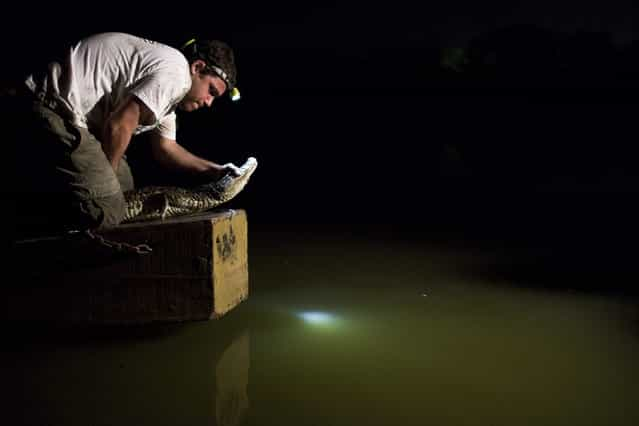
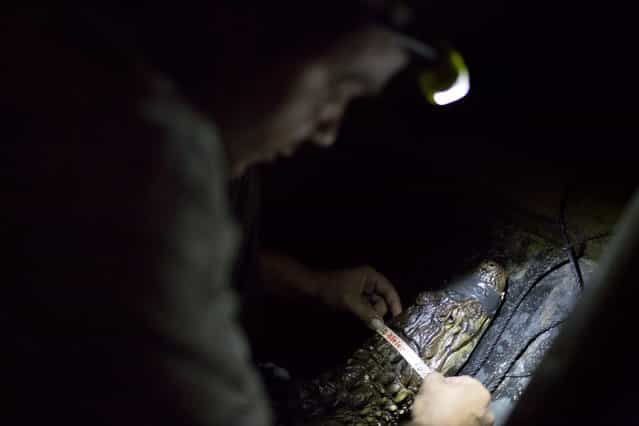
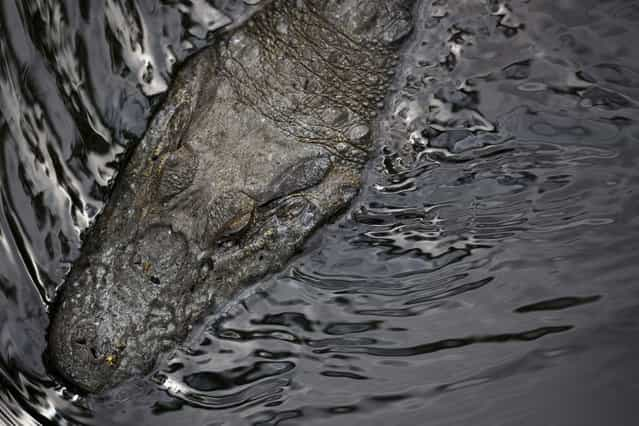
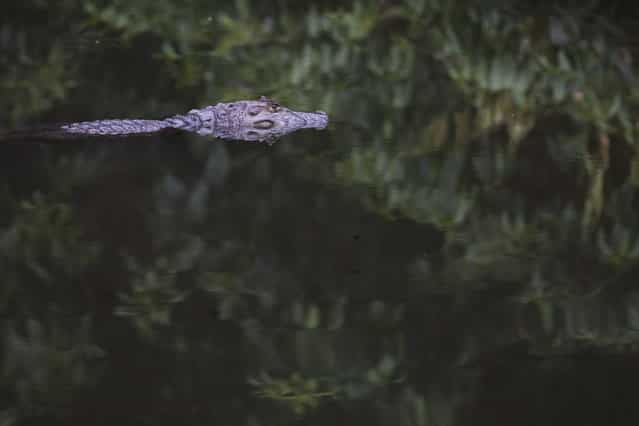
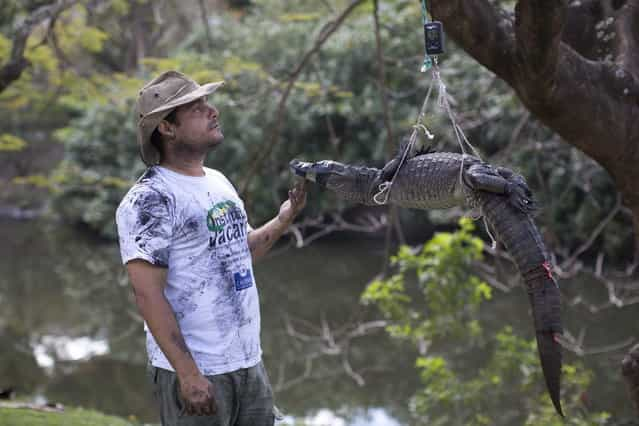
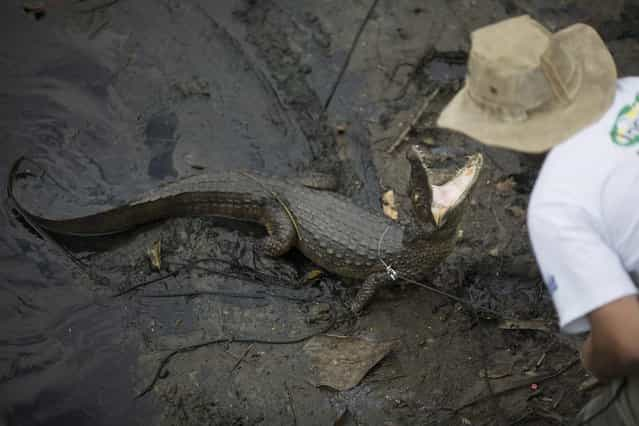
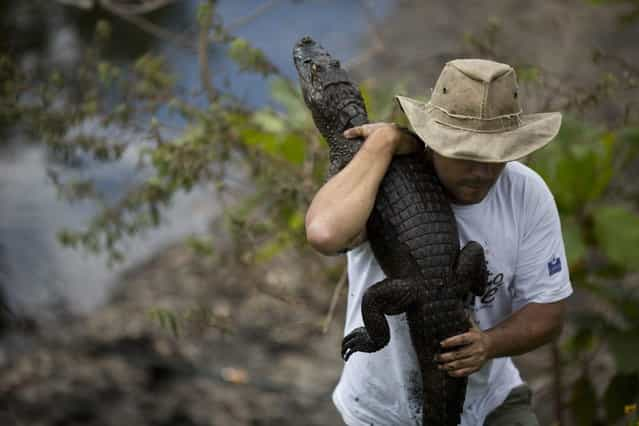
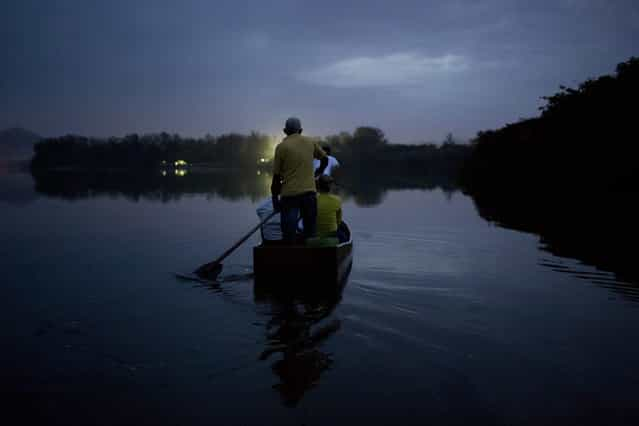
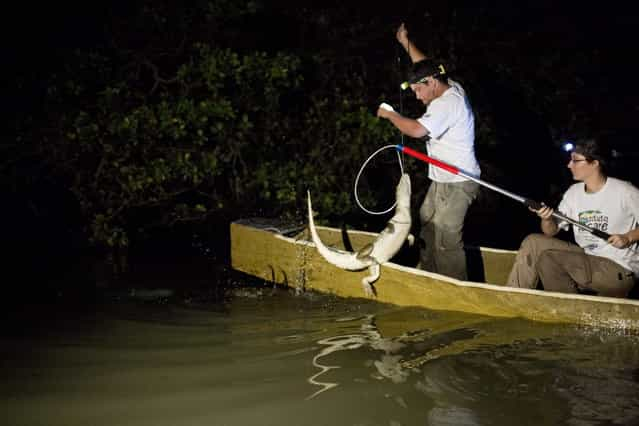
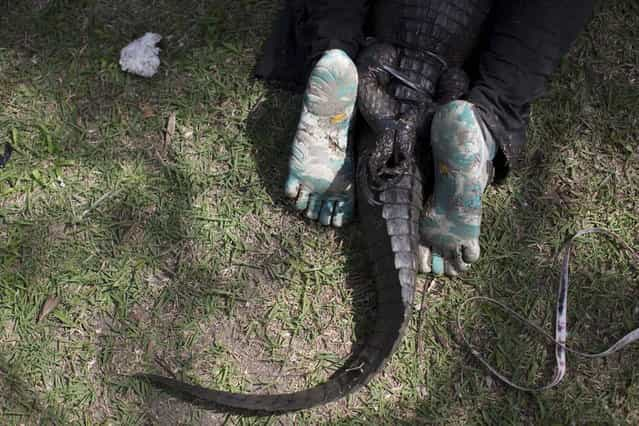




![[Bloco da Lama] or [Mud Block] Carnival in Brazil [Bloco da Lama] or [Mud Block] Carnival in Brazil](http://img.gagdaily.com/uploads/posts/app/2013/short/0000b87e_medium.png)



![Rare [Hybrid] Total Solar Eclipse Rare [Hybrid] Total Solar Eclipse](http://img.gagdaily.com/uploads/posts/fact/2013/short/00010c55_medium.jpg)





